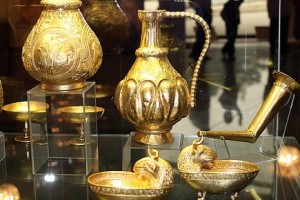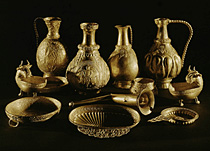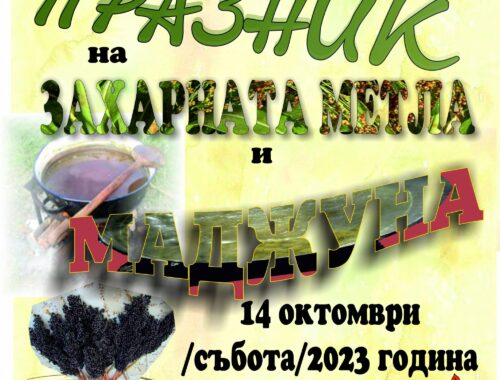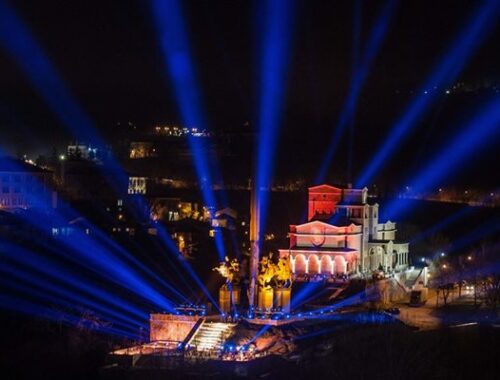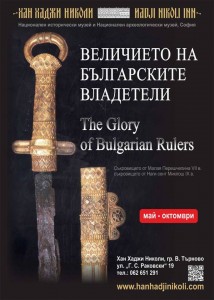 The most renowned hoards of khan Asparukh and khan Kubrat will be shown in an exhibition in Veliko Tarnovo. Its realization was made possible due to the cooperation of the National historical museum. The show was officially opened on Wednesday and will welcome visitors until the end of September. It is hosted in the exhibition rooms of Hadji Nikoli Inn, located in the artisan street called the Savodska charshia. The exposition is called The Glory of Bulgarian Rulers. The vessels on display are the sole precise replicas of the emblematic authentic medieval Bulgarian treasures. One of them was found near the village of Malaya Pereshchepina, Ukraine and the other near the town of Sânnicolau Mare, Romania. 9 vessel replicas from the treasure of khan Kubrat and copies of all the 23 vessels from the hoard of khan Asparukh will be put on display. The copies were gifted to Bulgaria as a present for the commemorations of the 1300th anniversary of the country’s founding. The exhibition itself is marking 1200 years from the death of another Bulgarian khan – Krum.
The most renowned hoards of khan Asparukh and khan Kubrat will be shown in an exhibition in Veliko Tarnovo. Its realization was made possible due to the cooperation of the National historical museum. The show was officially opened on Wednesday and will welcome visitors until the end of September. It is hosted in the exhibition rooms of Hadji Nikoli Inn, located in the artisan street called the Savodska charshia. The exposition is called The Glory of Bulgarian Rulers. The vessels on display are the sole precise replicas of the emblematic authentic medieval Bulgarian treasures. One of them was found near the village of Malaya Pereshchepina, Ukraine and the other near the town of Sânnicolau Mare, Romania. 9 vessel replicas from the treasure of khan Kubrat and copies of all the 23 vessels from the hoard of khan Asparukh will be put on display. The copies were gifted to Bulgaria as a present for the commemorations of the 1300th anniversary of the country’s founding. The exhibition itself is marking 1200 years from the death of another Bulgarian khan – Krum.
The discovery of a hoard in 1912 in the neighbourhood of Poltava, Ukraine, near the village of Malaya Pereshchepina was not in itself a rare event, but in its wealth and diversity this hoard far exceeds all others. It is rightfully regarded as one of the richest finds from the period of the nomadic migrations. Dated to the period between the ancient world and the 7th century AD, the hoard is thought to have belonged to Kubrat, Khan of Great Bolgary (Great Bulgaria). The treasure is uncommonly rich, consisting of over 800 pieces, mainly of gold (total weight over 25 kg) and silver (over 50 kg), including 16 gold and 19 silver vessels. The authentic vessels can only be seen in the State Hermitage Museum in Saint Petersburg, Russia.
The Treasure of Nagyszentmiklós or Treasure of Sânnicolau Mare is an important hoard of 23 early medieval gold vessels, in total weighing 9.945 kg found in 1799 near the town of Sânnicolau Mare in Romanian, Nagyszentmiklós in Hungarian. It is variously dated from the 6th to the 10th century. After the excavation, the treasure was transferred to Vienna, the capital of the then empire. Ever since, it has been in the possession of the Kunsthistorisches Museum there, where it is on permanent display.

